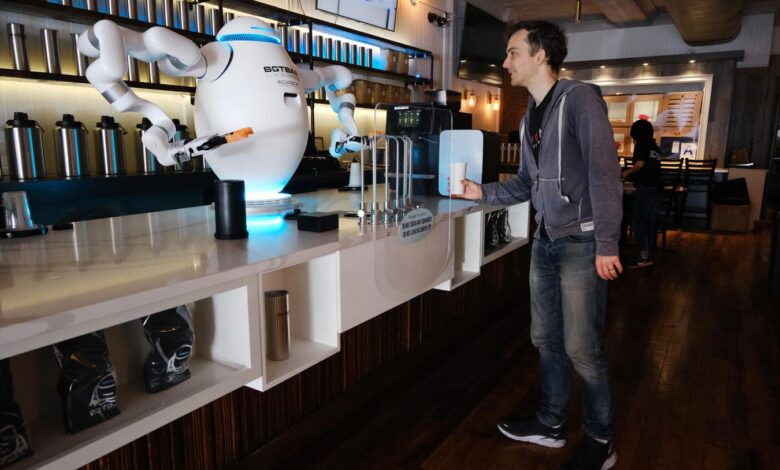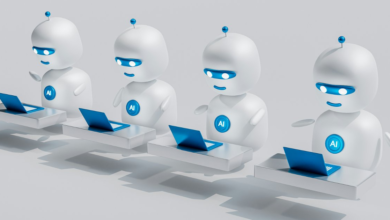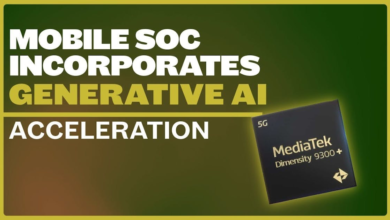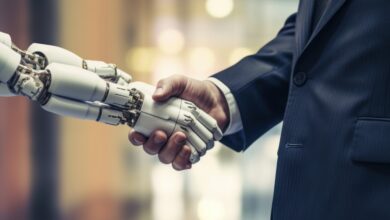How 7% GenAI US Adoption Is Still Shaking The Workforce

NEW YORK, NEW YORK – MAY 31: A two-armed robot called “ADAM” prepares a cup of coffee for a customer … [+]
If you believe the headlines, AI has already taken over. It’s ubiquitous, with everyone from students using ChatGPT to complete assignments, to businesses laying off workers in favor of intelligent automation. But the stats tell a different story.
A new report reveals that only 7% of people in the United States use generative AI daily. This statistic corrects some of the hyperbole surrounding AI, but it’s also notable for highlighting a significant gap in the adoption of generative AI technology. Despite the buzz, most people have only used it once or twice. This raises important questions about awareness, accessibility, and the perceived value of AI tools in our daily lives. It’s fascinating to see that despite all the hype, only a small fraction of the population actively engages with AI.
I urge you to read that Reuters report in full: it is truly eye-opening for anyone interested in understanding the current state of AI adoption. However, some claim the fact that only 7% use ChatGPT, the most widely known generative AI platform, daily isn’t surprising.
AI_branduse. How often, if at all, do you typically use each of the following generative AI chatbots … [+]
What did you expect? Major shifts in technology usage don’t happen overnight. It takes time for people to change their behaviors and see the value in a new technology compared to their old ways of doing things.
Debra Williamson told me that “Back in 1995, when companies first started building on the web, only 9% of US adults used the internet. One year later, that figure had doubled, and a year after that, it had tripled. This shows that significant technological shifts require time and gradual acceptance. We are likely at a similar juncture with AI”
What is AI Being Used For?
A popular sentiment I’ve seen circulating is the desire for AI to handle mundane tasks, not the creative ones. See the quote in X (twitter) from Joanna Maciejewsko shown throughout social media, that she was interested in “I want AI to do my laundry and dishes so that I can focus on art and writing, not for AI to do my art and writing so that AI can do my art and writing.” As of this writing, it had over 2.8M views.
Joanna Maciejewska Tweet on about AI
More than four in five digital marketers believe content writers will lose jobs because of AI, according to Authority Hacker. Many of my friends in marketing and content writing have seen massive layoffs, especially at startups and software companies. If a company had a staff of 20, they might only need three people now because they are leveraging AI to do the job much quicker and better. The same goes for graphic design and programming.
Timnit Gebru, Co-founder of the Distributed AI Research Institute (DAIR), emphasizes this point: “The benefits of AI are undeniable, but we must be cautious about the potential for job displacement and the erosion of human creativity. It’s essential that we focus on developing ethical AI frameworks that prioritize human well-being.”
SAN FRANCISCO, CA – SEPTEMBER 07: Google AI Research Scientist Timnit Gebru speaks onstage during … [+]
Heart is what separates us from robots, isn’t it? Yet in the drive to build and market these astounding technologies, it’s a fact that’s often forgotten. My message to the insanely creative visionaries building the AI future is: don’t think you’re immune. If AI can take writers’ jobs, there’s no reason it can’t take yours, too.
So we need to ask some searching questions about what tasks we want our AIs to do for us. It’s time to get more creative and be more patient in building AI solutions that remove drudgery. It begins by asking better questions. I don’t think we, as creatives, have really experimented with how generative AI can be a creative multiplier yet. These tools, in the hands of people who have built careers on thinking outside the box, have the potential to be truly transformative.
AI Makes Me More Effective
But are the doomsday predictions about AI’s threat to jobs actually true? According to SEO.AI, by May 2023, only 3,900 US job losses were linked directly to AI. The same survey found that 14% of workers have experienced job displacement due to AI, suggesting that the present impact is somewhat more restrained than the anticipation.
Rather than stealing their livelihoods, many believe that AI is helping them become more effective. For creatives, AI presents a unique opportunity to enhance work. We haven’t fully experimented with how generative AI can amplify our creativity. Instead of fearing AI as a replacement, we should view it as a collaborator that can take on repetitive tasks, allowing us to focus on what truly matters – the creative process itself.
Jaron Lanier, Computer Scientist and Composer, captures this sentiment well: “AI should be a tool that enhances human creativity, not a replacement for it,” he says. “We need to rethink our approach to AI development to ensure it supports and amplifies our creative endeavors rather than undermining them.”
Jaron Lanier, partner architect in eXtreme computing group for Microsoft Corp., speaks at an … [+]
We need to develop AI systems that complement human creativity rather than replace it. AI can handle the repetitive aspects of creative work, such as generating initial drafts or designs, freeing up humans to focus on refining and perfecting those ideas. This collaboration can lead to a new era of creativity, where humans and AI work together to produce innovative and high-quality work.
As Jensen Huang, CEO of NVIDIA
SPDR Dow Jones Industrial Average ETF Trust
Moreover, we need to focus on upskilling and reskilling our workforce. As AI continues to evolve, so too must our skills. Over 120 million workers are poised to undergo retraining in the next three years as AI reshapes industry demands. By investing in education and training, we can ensure that people are equipped to work alongside AI, leveraging its capabilities to enhance their own work. This approach not only mitigates the risk of job displacement but also empowers individuals to harness the full potential of AI.
Where Do We Go From Here?
Generative AI was initially touted as a solution for mundane tasks, but its capabilities have expanded far beyond that. While it is indeed being used for data entry, scheduling, and customer service, it is also being employed in more complex and creative fields. This shift raises an important question: where do we go from here?
To start, we need to address completely valid concerns around job displacement. AI’s ability to perform tasks traditionally done by humans means that companies are using it to eliminate creative jobs. This wasn’t the original intent; AI was supposed to free us from repetitive, mundane tasks so we could focus on higher-value activities.
Andrew Ng, Co-founder of Coursera and Adjunct Professor at Stanford University, suggests a way forward: “AI is transforming industries, but we must ensure that the benefits are broadly distributed. Upskilling and reskilling programs are critical to help workers adapt to the changes brought by AI and to harness its potential fully.”
Andrew Ng who is the Founder and CEO of LandingAI and deep learning.ai talks about AI during a … [+]
As AI becomes more integrated into our lives and work, we must address issues of bias, transparency, and accountability. Developing ethical guidelines and frameworks for AI usage is crucial to ensure that these technologies are used responsibly and for the benefit of all.
The impact of AI on our lives and work is profound, multifaceted and, at times, bewildering. While only a small percentage of people currently use generative AI daily, its potential is enormous. We must navigate this transition carefully, addressing concerns around job displacement and dependency while also exploring the opportunities for enhanced creativity and collaboration. By doing so, we can harness the power of AI to improve the human experience by contributing to our creativity rather than making us redundant.



